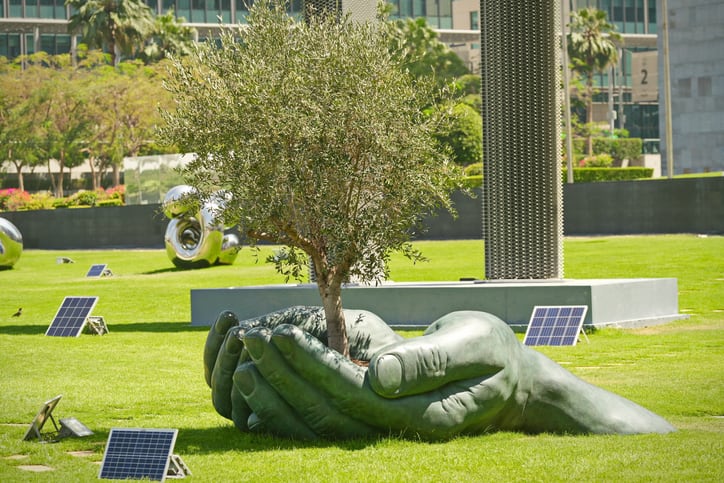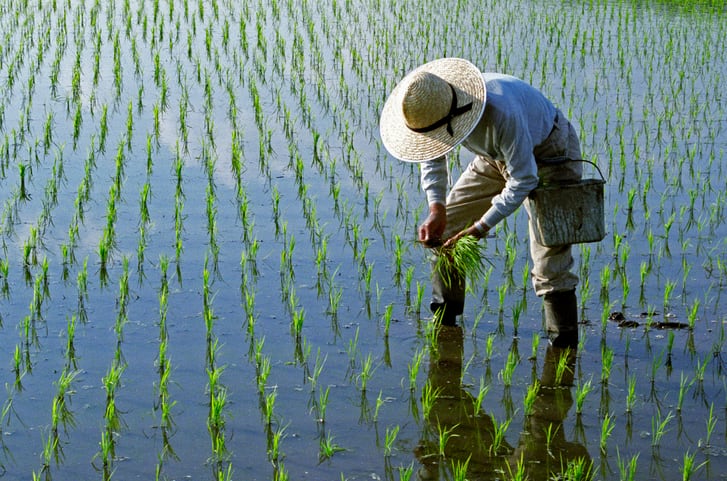Last week 134 nations, including the US, China, Brazil, China, Germany, Italy, Spain, UK and Australia, signed the COP28 UAE Declaration on Sustainable Agriculture, Resilient Food Systems, and Climate Action.
It has been hailed by many as a major milestone on the road towards a more resilient and sustainable food and agricultural system.
It features commitments to adopt adaptation measures to improve food resilience and reduce the harmful environmental impacts of the food system. These include shifting from higher greenhouse gas-emitting practices to more sustainable production and consumption, good water management, and the conservation of ecosystems and soil.
On the face of it, this is good news for the fast-moving agtech industry and its efforts to transform the food industry through innovation and play a critical role in addressing food security and environmental challenges.
But the real work begins now. “Governments need to work with family farmers networks to ensure the promises made in Dubai are translated into the concrete policies and funding needed to support small-scale producers,” pointed out Esther Penunia, Secretary-General of the Asian Farmers’ Association Sustainable Development – a regional alliance of national farmers organisations representing 13 million family farmers across Asia.
It is these small-scale farmers who produce a third of the world’s food. Supporting them is therefore crucial to promote the “shift to more diverse and nature friendly farming which the Intergovernmental Panel on Climate Change says is needed to safeguard food security,” she added.
Commitments still lacking
This is not as easy as it sounds. Campaigners lament that the declaration is missing clear targets and they often do not trust the credibility of governments to deliver on the declaration.
Ruth Westcott, climate and nature emergency coordinator at UK-based Sustain, said: “It’s great to see world leaders acknowledging that we have no hope of avoiding catastrophic climate change unless we transform the food we eat and how we farm, but the declaration doesn't contain any legally binding targets, or any commitments around phasing out intensive livestock production and consumption.”
For wealthier countries such as the UK, she said significant reductions in the production and consumption of meat and dairy and tackling food waste need to be part of national climate commitments. “Richer nations also need to commit to reducing the negative impact of our diets on poorer nations, which are driving deforestation, pollution, and land grabbing.”
At last year’s COP27, meanwhile, more than 25 countries signed a pledge to end deforestation by 2030. But a recent report from the World Benchmarking Alliance (WBA) shows there is still a long way to tackle the deforestation problem.
While food systems are responsible for a third of global greenhouse gas emissions, and agricultural expansion drives almost 90% of global deforestation, only 15% of companies have a commitment to zero ecosystem conversion. Just 6% have a time-bound commitment to eliminate deforestation entirely. More worryingly, it said, only 2% of companies understand their wider impact on nature, despite their reliance on the long-term health of the planet to grow crops.
The WBA’s food and agriculture transformation lead, Viktoria de Bourbon de Parme, called the COP declaration a ‘huge step forward’ into making sure that food systems are incorporated into climate action. More specifically this requires national governments to include a food systems action in their national determined contributions and national adaptation plans.
But the big missing piece is guidance on the how. She explained to AgTechNavigator: “This is where existing frameworks and guidelines which WBA includes in its benchmark assessments can provide a way forward especially when it comes to reducing methane emissions, halting deforestation, incentivising more plant-based diets, radically reducing food loss and waste and above all supporting farmers who are at the front line of most of these important transitions and battling climate change every day.”
The issue of a lack of clear targets was further illustrated by the news that at COP28 six global food majors have committed to publicly disclosing their dairy-related methane emissions and drawing up detailed plans of action. These companies, however, won’t be tied to a specific methane reduction target. Danone is the only firm to have set out methane-specific reduction targets for dairy.
Funds have been mobilised – how will they be used?
But is there is room for optimism. At COP28 more than US$2.5 billion has been mobilised to support the food-climate agenda. This includes more than US$890 million secured by CGIAR, the world’s largest global agricultural innovation network.
With this funding, CGIAR said it will expand its work supporting smallholder farmers in low- and middle-income countries to shape more resilient, sustainable, and equitable food systems, and reduce emissions from farming.
CGIAR said its 2025-2027 research portfolio will support scientists, experts, and partners in hundreds of countries to expand and scale world-changing innovations – from new tools and technologies for food producers, such as AI-enabled apps to diagnose diseases in plants, to more nutritious and climate-resilient crops like bio-fortified sweet potatoes, next-generation cassava, and scuba rice.
For every dollar invested in agricultural research and development, CGIAR said, investors see up to USD 10 worth of benefits to smallholder farmers, vulnerable communities and ecosystems.
The US$2.5 billion also includes a US$200 million partnership between UAE and the Bill & Melinda Gates Foundation. Again, this is focused on agricultural research, scaling agricultural innovations and funding technical assistance for implementing the declaration.
“Investing in agriculture R&D now is one of our best bets to help the world adapt to climate change and prevent millions more from going hungry,” said Dina Esposito from the United States Agency for International Development, which will invest US$100 million to CGIAR over the next two years.
More direct access to climate finance needed for farmers
The challenge now is to make sure that this money is earmarked in the best ways for innovation to prove the most impactful.
For example, Elizabeth Nsimadala, President of the Eastern Africa Farmers Federation, said the declaration has sounded the starting gun on the transformation of our food system. But she demanded more direct access to climate finance for the world’s 439 million small-scale family farmers. “We receive just 0.3% of international climate finance despite producing a third of the world’s food,” she said. “If governments work with us - and invest in us - we will create resilient and sustainable food systems which will feed the world for generations to come.”





